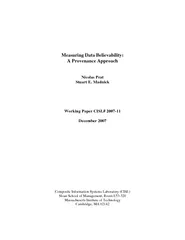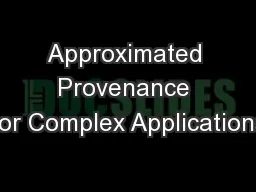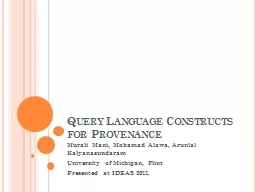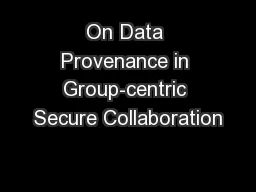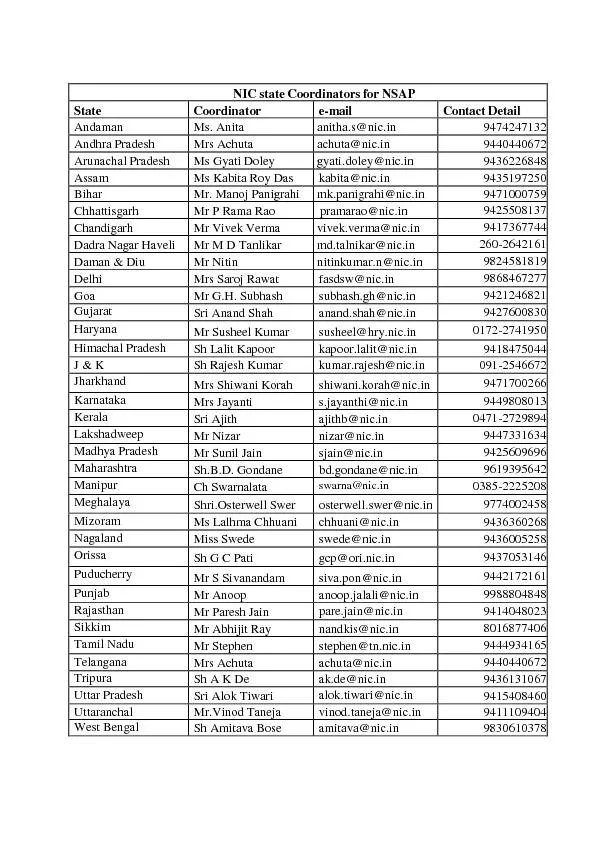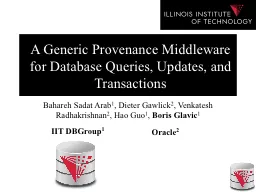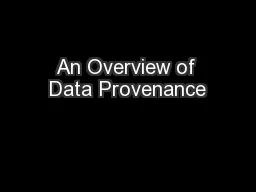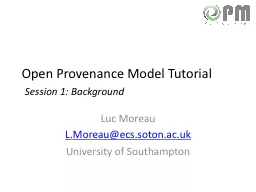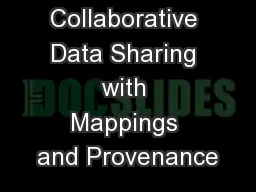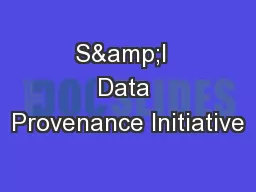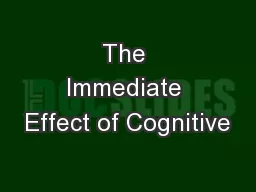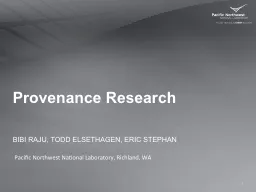PDF-Measuring Data Believability A Provenance Approach Nic
Author : mitsue-stanley | Published Date : 2015-05-05
Madnick Working Paper CISL 200711 December 2007 Composite Information Sy stems Laboratory CISL Sloan School of Management Room E53320 Massachusetts Institute of
Presentation Embed Code
Download Presentation
Download Presentation The PPT/PDF document "Measuring Data Believability A Provenanc..." is the property of its rightful owner. Permission is granted to download and print the materials on this website for personal, non-commercial use only, and to display it on your personal computer provided you do not modify the materials and that you retain all copyright notices contained in the materials. By downloading content from our website, you accept the terms of this agreement.
Measuring Data Believability A Provenance Approach Nic: Transcript
Download Rules Of Document
"Measuring Data Believability A Provenance Approach Nic"The content belongs to its owner. You may download and print it for personal use, without modification, and keep all copyright notices. By downloading, you agree to these terms.
Related Documents

